Boost Your Hiring Success

Collaborative hiring is the process of involving multiple stakeholders in the recruitment process. It can be an effective strategy for ensuring that the right candidates are selected and that the hiring process is fair and inclusive. In this article, we’ll discuss seven tips for developing a collaborative hiring strategy that can help you build a stronger and more diverse team.
The first step in developing a collaborative hiring strategy is to identify the key stakeholders who will be involved in the recruitment process. This may include HR professionals, hiring managers, department heads, team members, and even external stakeholders such as customers or suppliers. It’s important to ensure that everyone involved in the hiring process understands their role and responsibilities and is committed to working collaboratively to achieve the best possible outcomes.
Effective communication is essential for successful collaborative hiring. You should establish clear and open communication channels between all stakeholders involved in the recruitment process. This may include regular meetings, emails, or even a shared collaboration platform where everyone can stay informed and up-to-date on the progress of the recruitment process.
Data-driven tools can help you make more informed hiring decisions and improve the efficiency of the recruitment process. For example, you can use applicant tracking systems (ATS) to track candidate applications and resumes, or video interviewing software to conduct initial interviews remotely. These tools can help you save time and resources and ensure that the recruitment process is more objective and fair.
Collaborative hiring can help you build a more diverse and inclusive team. It’s important to ensure that everyone involved in the hiring process understands the importance of diversity and inclusion and is committed to promoting these values throughout the recruitment process. You should also consider using blind hiring techniques or other strategies to reduce unconscious bias in the recruitment process.
To ensure that all stakeholders are aligned in their evaluation of candidates, you should develop clear and objective criteria for evaluating candidates. This may include skills, experience, education, or other factors that are important for the role. You should also consider developing a scorecard or other evaluation tool that can help you compare candidates objectively.
Finally, you should regularly evaluate and improve the collaborative hiring process. This may involve soliciting feedback from stakeholders, analyzing recruitment metrics, or conducting post-hire evaluations to assess the effectiveness of the recruitment process. By continuously evaluating and improving the process, you can ensure that your collaborative hiring strategy is effective and efficient.
In conclusion, collaborative hiring can be an effective strategy for building a stronger and more diverse team. By following these seven tips, you can develop a collaborative hiring strategy that is transparent, objective, and inclusive, and that can help you make more informed hiring decisions.
Global People is a leading local employment solutions provider for national and international corporations and can advise and escort you in your next destination.






